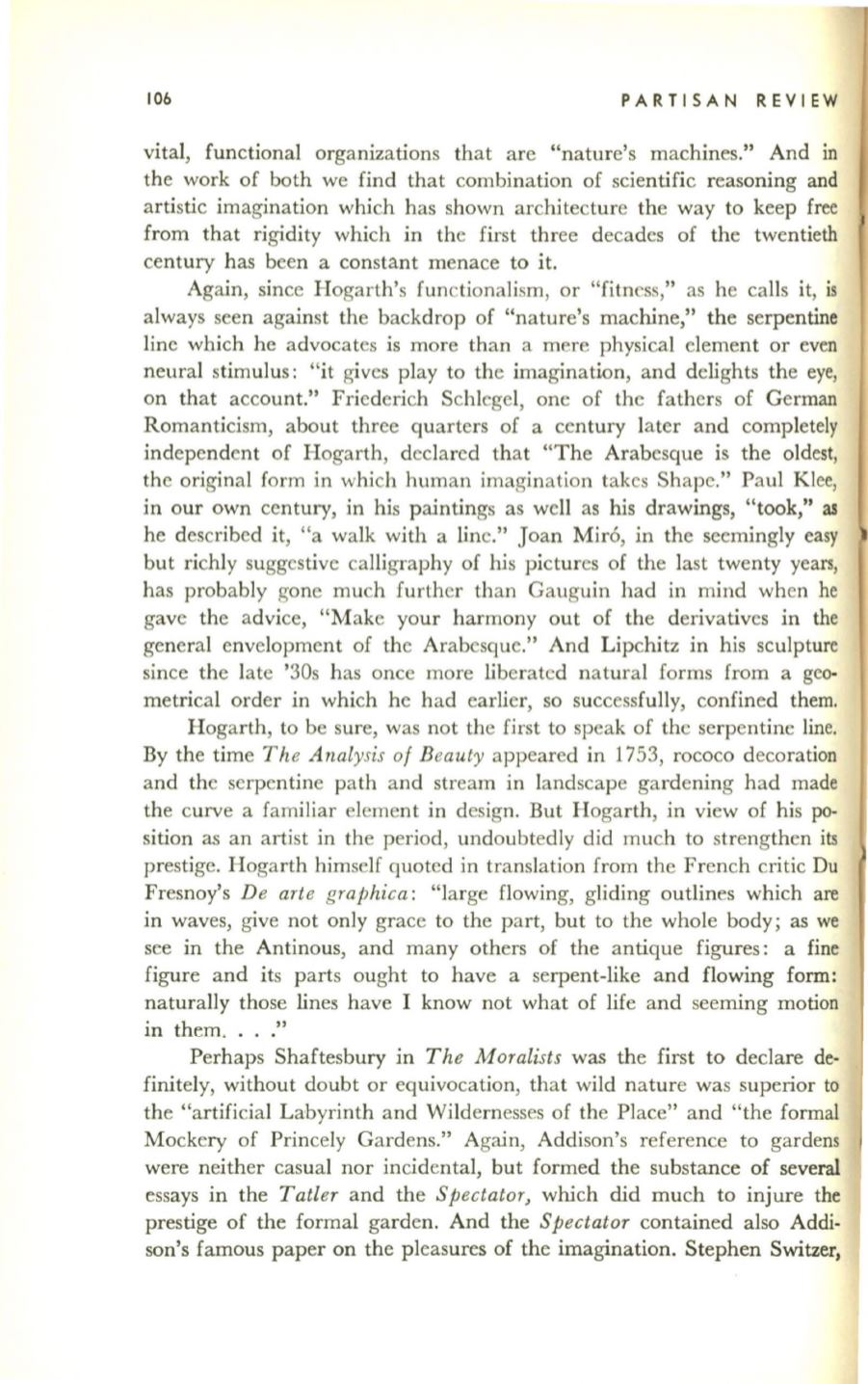
lOb
PARTISAN REVIEW
vital, functional organizations that are "nature's machines." And in
the work of both we find that combination of scientific reasoning and
artistic imagination which has shown architecture the way to keep free
from that rigidity which in the first three decades of the twentieth
century has been a constant menace to it.
Again, since Hogarth's functionalism, or "fitness," as he calls it, is
always seen against the backdrop of "nature's machine," the serpentine
line which he advocates is more than a mere physical element or even
neural stimulus: "it gives play to the imagination, and delights the eye,
on that account." Friederich Schlegel, one of the fathers of German
Romanticism, about three quarters of a century later and completely
independent of Hogarth, declared that "The Arabesque is the oldest,
the original form in which human imagination takes Shape." Paul Klee,
in our own century, in his paintings as well as his drawings, "took,"
as
he described it, "a walk with a line." Joan Miro, in the seemingly easy ,
but richly suggestive calligraphy of his pictures of the last twenty years,
has probably gone much further than Gauguin had in mind when he
gave the advice, "Make your harmony out of the derivatives in the
general envelopment of the Arabesque." And Lipchitz in his sculpture
since the late '30s has once more liberated natural forms from a geo–
metrical order in which he had earlier, so successfully, confined them.
Hogarth, to be sure, was not the first to speak of the serpentine line.
By the time
Th e Analysis of Beauty
appeared in 1753, rococo decoration
and the serpentine path and stream in landscape gardening had made
the curve a familiar element in design. But Hogarth, in view of his po–
sition as an artist in the period, undoubtedly did much to strengthen its
prestige. Hogarth himself quoted in translation from the French critic Du
Fresnoy's
De arte graphica:
"large flowing, gliding outlines which are
in waves, give not only grace to the part, but to the whole body; as we
see in the Antinous, and many others of the antique figures: a fine
figure and its parts ought to have a serpent-like and flowing form:
naturally those lines have I know not what of life and seeming motion
in them...."
Perhaps Shaftesbury in
The Moralists
was the first to declare de–
finitely, without doubt or equivocation, that wild nature was superior to
the "artificial Labyrinth and Wildernesses of the Place" and "the formal
Mockery of Princely Gardens." Again, Addison's reference to gardens
were neither casual nor incidental, but formed the substance of several
essays in the
T atler
and the
Spectator,
which did much to injure the
prestige of the formal garden. And the
Spectator
contained also Addi–
son's famous paper on the pleasures of the imagination. Stephen Switzer,


